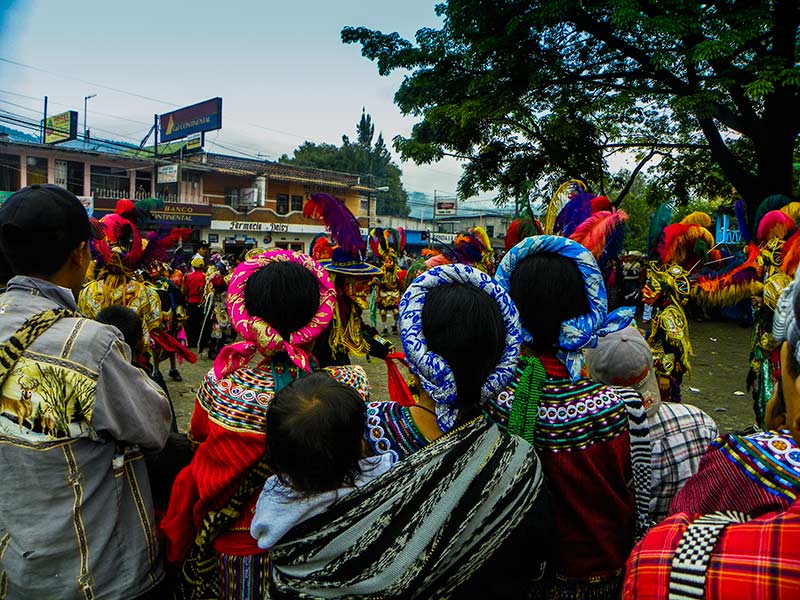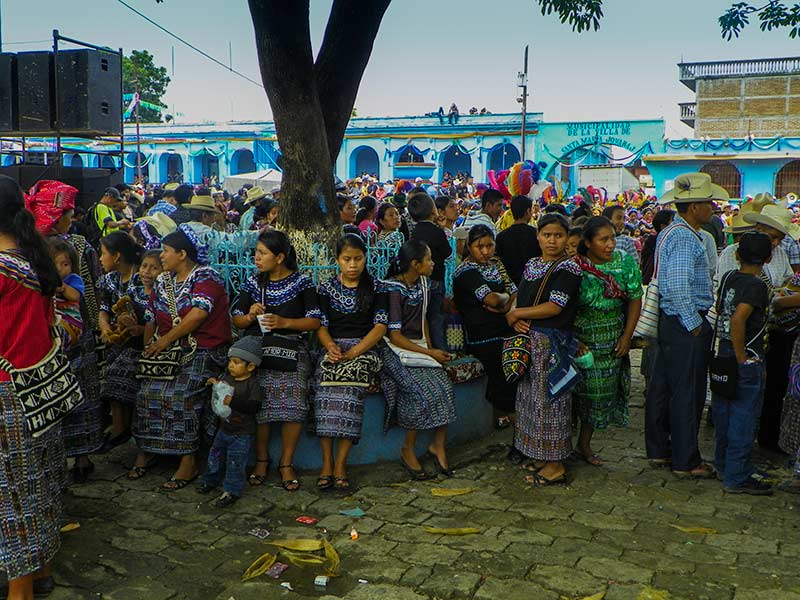What Traditions Define Guatemalan Culture?
Guatemala’s traditions boast a vibrant cultural tapestry woven from diverse influences, reflecting centuries of rich heritage. Traditions hold profound significance in shaping the collective identity of Guatemalan society. This blog aims to delve into the essence of critical Guatemalan traditions that define its unique cultural landscape, offering insights into the customs and practices that resonate deeply within the hearts of its people.
Historical Background
In the pre-Columbian Era, the Mayan Civilization flourished between 2000 BC and 1500 AD, leaving an indelible mark on the region. Their astronomy, architecture, and mathematics knowledge significantly affects the cultural landscape. The Indigenous Traditions of Guatemala reflect the rich heritage of native groups residing in this remarkable area. These communities are proud descendants of the Mayan people, preserving their customs and traditions.
During the Colonial Influence period, the Spanish Conquest brought prosperity and challenges to Guatemala. The country gained independence from Spain on September 15, 1821. This Era marked new opportunities for those of Spanish blood (creoles) while imposing harsh conditions on those of Mayan descent. The syncretism of cultures during this time laid the foundation for a unique blend of traditions that define Guatemalan culture today.
In more recent times, Modern Influences have continued to shape Guatemala’s cultural identity. The post-independence Era witnessed a fusion of Roman Catholicism with the indigenous Maya religion, creating a syncretic belief system that prevails throughout the country. This blend is particularly prominent in rural regions where traditional practices are deeply rooted in everyday life.
The dynamic interplay between historical epochs has contributed to Guatemala’s rich tapestry of traditions, each layer adding depth to the cultural mosaic that defines Guatemala’s Culture.
Religious Traditions
Catholicism
The influence of Catholicism in Guatemalan culture is profound. Major festivals serve as vibrant celebrations of faith and tradition. These festivals bring communities together, fostering a sense of unity and spiritual connection. Religious practices are profoundly ingrained in daily life, guiding individuals in their interactions and moral conduct.
Indigenous Beliefs
Within the tapestry of Guatemala traditions, Mayan Spirituality shines brightly as a testament to the enduring legacy of ancient wisdom. The reverence for nature and ancestral spirits permeates indigenous beliefs, shaping rituals and ceremonies that honor the interconnectedness of all living beings. Syncretic practices blend elements of Catholicism with traditional Mayan customs, creating a unique spiritual landscape that resonates with the soul.
Family and Social Customs

In Guatemala’s Culture, the Family Structure shapes societal dynamics. The Role of Extended Family extends beyond mere kinship, fostering a sense of community and support that transcends generations. This interconnectedness forms the foundation of Guatemalan family life, emphasizing unity and collective well-being.
Traditional distinctions persist in gender roles, delineating responsibilities based on cultural norms. Men often assume roles associated with outdoor work and decision-making, while women excel in nurturing familial bonds and maintaining household harmony. These roles reflect a harmonious blend of tradition and modernity within Guatemalan families.
Regarding Social Etiquette in Guatemala, interactions are imbued with warmth and respect. Greetings and Interactions are marked by genuine interest and politeness, with individuals often engaging in lively conversations to express camaraderie. Hospitality is a cornerstone of Guatemalan culture, where guests are welcomed with open arms and treated as honored visitors.
The art of Hospitality and Gift-Giving holds special significance in Guatemalan customs, symbolizing generosity and goodwill. Hosting guests is a privilege; hosts go above and beyond to ensure comfort and enjoyment. Similarly, gift-giving expresses gratitude and appreciation, strengthening social bonds through thoughtful gestures.
Festivals and Celebrations

National Holidays
Guatemala’s tapestry of festivals vividly illustrates the nation’s rich cultural heritage. From the mesmerizing indigenous celebrations that preserve ancestral customs to the deeply rooted religious observances blending Mayan and Catholic traditions, each festival is a window into the soul of Guatemala. Through our exploration, we’ve uncovered the pivotal role these festivals play, not just in cultural expression but in the day-to-day lives of the Guatemalan people.
Independence Day
Heavily attended fairs and religious festivals are scheduled in every part of Guatemala throughout the year. Guatemala’s national day of independence from Spain, September 15, is celebrated across the country with fireworks, dances, parades, football matches, and cockfights.
Semana Santa (Holy Week)
Semana Santa (Holy Week) is one of the country’s most captivating and elaborate religious events. Antigua, Guatemala, becomes a stage for processions depicting the Passion of Christ, with colorful carpets of dyed sawdust, flowers, and fruits adorning the streets.
Local Festivals

Guatemalan holidays unite families and visitors in vibrant celebrations commemorating historical events or displaying religious imagery. Learn more about Guatemala’s traditions.
Feria de Jocotenango
Festivals like Semana Santa (Holy Week) at Easter are marked by celebrations throughout Guatemala. Many Guatemalans travel to Antigua, Guatemala, to attend services at its grand Baroque cathedral during this time.
Day of the Dead
The Day of the Dead is another significant celebration in Guatemala, during which families honor their departed loved ones through various rituals and offerings. This tradition showcases a deep respect for ancestors and a belief in maintaining connections beyond life.
Traditional Arts and Crafts
Textiles
Weaving Techniques
•Guatemalan fashion is renowned for using brightly colored yarn textiles, reflecting the Maya’s historical preference for vibrant fabrics.
•Indigenous communities have upheld their textile traditions for generations. Each intricate weave tells a unique story of heritage and beliefs.
•Traditional Mayan textiles are crafted using backstrap looms. They incorporate a diverse palette of colors and complex patterns, symbolizing elements of Mayan cosmology and regional identities.
Symbolism in Patterns
•The resplendent attire worn during Guatemalan festivals is not merely clothing but a profound cultural statement. These garments, often handwoven through ancestral techniques, symbolize social status and regional identity.
•Inspired by natural resources and ancestral Mayan culture, Guatemalan crafts have blossomed into a sustainable industry that celebrates creativity and tradition.
•Guatemala’s reputation for vibrant textiles and intricate weavings stands out in Latin America. Each pattern carries deep-rooted meanings within Mayan cosmology and the weaver’s community.
Pottery and Ceramics
Traditional Methods
•Guatemala’s traditional arts extend beyond textiles to encompass pottery and ceramics. Artisans draw inspiration from their Mayan past to create handmade items that reflect the country’s rich cultural heritage.
• Guatemalan ceramics’ artistry is a testament to the creativity nurtured by ancestral influences. Each piece tells a story woven with threads of tradition and innovation.
•Handcrafted pottery in Guatemala mirrors the diverse influences that have shaped its culture over centuries, blending indigenous roots with European and Caribbean inspirations.
Regional Styles
•Guatemala’s pottery scene thrives on diversity, with regional styles showcasing unique aesthetics influenced by local traditions and historical legacies.
•The intricate designs adorning Guatemalan ceramics are more than mere decorations; they encapsulate resilient, creative, and cultural pride narratives.
•From vibrant hues to intricate motifs, Guatemalan pottery reflects a tapestry of influences that resonate with the country’s multicultural essence.
Music and Dance
Marimba Music
•The marimba is the national instrument of Guatemalan culture. It embodies the soulful rhythms that have echoed throughout the country’s history.
•Vibrant marimba music enlivens celebrations across Guatemala, infusing gatherings with melodies that speak to the heart of its people.
•Rooted in tradition yet resonating with modernity, marimba music captures the essence of Guatemala’s musical heritage in every beat.
Traditional Dances
•Traditional dances in Guatemala are more than performances; they are expressions of cultural pride passed down through generations.
•Each dance movement carries echoes of ancient rituals and storytelling traditions that connect dancers to their ancestors’ legacy.
• Traditional dances, with their graceful movements and colorful attire, breathe life into Guatemala’s rich tapestry of cultural diversity.
•Reflect on the vibrant tapestry of Guatemala’s traditions, each thread weaving a story of resilience and cultural pride.
•Emphasize safeguarding these customs for future generations to cherish and learn from.
• We extend a heartfelt invitation to all travelers to immerse themselves in Guatemala’s rich heritage and embrace its traditions with open hearts and minds.
•Contemplate the ever-evolving nature of traditions in shaping Guatemala’s cultural identity, a dynamic mosaic that continues to inspire and captivate visitors.




